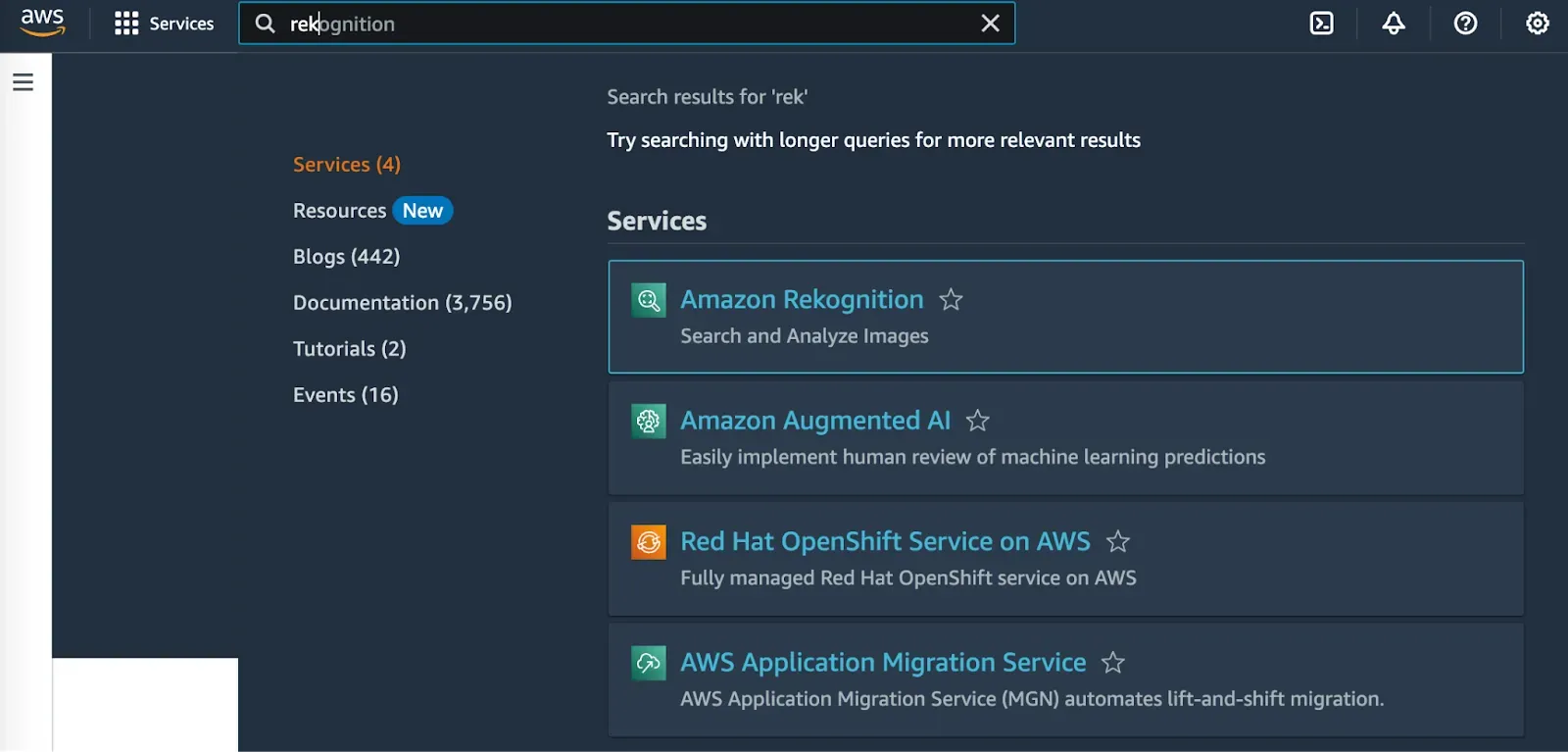AWS Rekognition: Complete Buyer's Guide
Enterprise-grade computer vision capabilities through Amazon's deep learning infrastructure
AWS Rekognition delivers enterprise-grade computer vision capabilities through Amazon's deep learning infrastructure, enabling automated image and video analysis without requiring machine learning expertise. As part of the broader AWS AI portfolio, Rekognition transforms visual content into actionable metadata through API-driven object detection, scene recognition, facial analysis, and text extraction[127][129].
Market Position & Maturity
Market Standing
AWS Rekognition operates from Amazon's established position as a leading cloud infrastructure provider, leveraging the stability and scale of AWS's global infrastructure to deliver computer vision capabilities.
Company Maturity
As part of Amazon Web Services' comprehensive AI portfolio, Rekognition benefits from enterprise-grade operational maturity and the financial backing of one of the world's largest technology companies[127][129].
Growth Trajectory
The service demonstrates market validation through documented enterprise customer implementations across diverse industries, including NASA's scientific data management, River Island's retail operations, and Mecum Auctions' large-scale image processing[140][141][144].
Industry Recognition
AWS's broader market position provides significant stability advantages, with the company's cloud infrastructure serving millions of customers globally and generating substantial revenue streams that support continued AI service development.
Strategic Partnerships
The service's inclusion in AWS's core AI offerings demonstrates strategic importance within Amazon's broader technology portfolio, suggesting continued development priority and resource allocation.
Longevity Assessment
This financial foundation ensures long-term service availability and ongoing capability enhancement, addressing buyer concerns about vendor viability and continued innovation investment.
Proof of Capabilities
Customer Evidence
NASA's Scientific Data Management represents large-scale institutional validation, with AI-generated metadata improving dataset discovery capabilities across extensive research collections[144].
Quantified Outcomes
Cost efficiency evidence demonstrates reduction from $2-$5 per image manual tagging to $0.001-$0.0008 per image automated processing at enterprise volumes[134][136].
Case Study Analysis
River Island's Retail Implementation achieved measurable operational improvements through automated color-based tagging, with documented success factors including predefined taxonomy establishment before AI deployment[research shows implementation patterns].
Market Validation
Performance validation includes documented processing capabilities handling millions of images with API response times under 2 seconds for 90% of calls[127][128].
Competitive Wins
Mecum Auctions' Large-Scale Operations successfully deployed automated image tagging across high-throughput auction scenarios, demonstrating capability in environments requiring rapid, consistent metadata generation for diverse visual content[140][141].
Reference Customers
Proven customer validation through implementations at NASA, River Island, and Mecum Auctions demonstrates effectiveness across government, retail, and auction industries[140][141][144].
AI Technology
AWS Rekognition's technical foundation leverages Amazon's deep learning infrastructure to deliver computer vision capabilities through a comprehensive API-driven architecture. The service employs pre-trained neural networks optimized for object detection, scene recognition, facial analysis, and optical character recognition, eliminating the need for organizations to develop machine learning expertise internally[127][129].
Architecture
The platform's real-time streaming video analysis represents a significant technical differentiator, enabling continuous monitoring applications like package detection from live feeds that batch processing solutions cannot address[130][136].
Primary Competitors
AWS Rekognition competes directly with Google Cloud Vision API and Azure Cognitive Services in the enterprise AI image analysis market[142][143].
Competitive Advantages
Primary Competitive Advantage lies in real-time streaming video analysis that batch processing solutions cannot match, enabling use cases like live package detection and continuous monitoring applications unavailable through alternative services[130][136].
Market Positioning
AWS Ecosystem Integration provides significant advantages for organizations with existing AWS infrastructure investments, offering seamless connectivity with S3, Lambda, and other AWS services that reduces integration complexity compared to multi-vendor solutions requiring custom API development[127][129].
Win/Loss Scenarios
Multi-Cloud Considerations favor Google Cloud Vision API or Azure Cognitive Services for organizations avoiding vendor lock-in or operating across multiple cloud platforms[142][143].
Key Features

Pros & Cons
Use Cases
Integrations
Pricing
Featured In Articles
Comprehensive analysis of AI Image Metadata Tools for AI Design for AI Design professionals. Expert evaluation of features, pricing, and implementation.
How We Researched This Guide
About This Guide: This comprehensive analysis is based on extensive competitive intelligence and real-world implementation data from leading AI vendors. StayModern updates this guide quarterly to reflect market developments and vendor performance changes.
144+ verified sources per analysis including official documentation, customer reviews, analyst reports, and industry publications.
- • Vendor documentation & whitepapers
- • Customer testimonials & case studies
- • Third-party analyst assessments
- • Industry benchmarking reports
Standardized assessment framework across 8 key dimensions for objective comparison.
- • Technology capabilities & architecture
- • Market position & customer evidence
- • Implementation experience & support
- • Pricing value & competitive position
Research is refreshed every 90 days to capture market changes and new vendor capabilities.
- • New product releases & features
- • Market positioning changes
- • Customer feedback integration
- • Competitive landscape shifts
Every claim is source-linked with direct citations to original materials for verification.
- • Clickable citation links
- • Original source attribution
- • Date stamps for currency
- • Quality score validation
Analysis follows systematic research protocols with consistent evaluation frameworks.
- • Standardized assessment criteria
- • Multi-source verification process
- • Consistent evaluation methodology
- • Quality assurance protocols
Buyer-focused analysis with transparent methodology and factual accuracy commitment.
- • Objective comparative analysis
- • Transparent research methodology
- • Factual accuracy commitment
- • Continuous quality improvement
Quality Commitment: If you find any inaccuracies in our analysis on this page, please contact us at research@staymodern.ai. We're committed to maintaining the highest standards of research integrity and will investigate and correct any issues promptly.